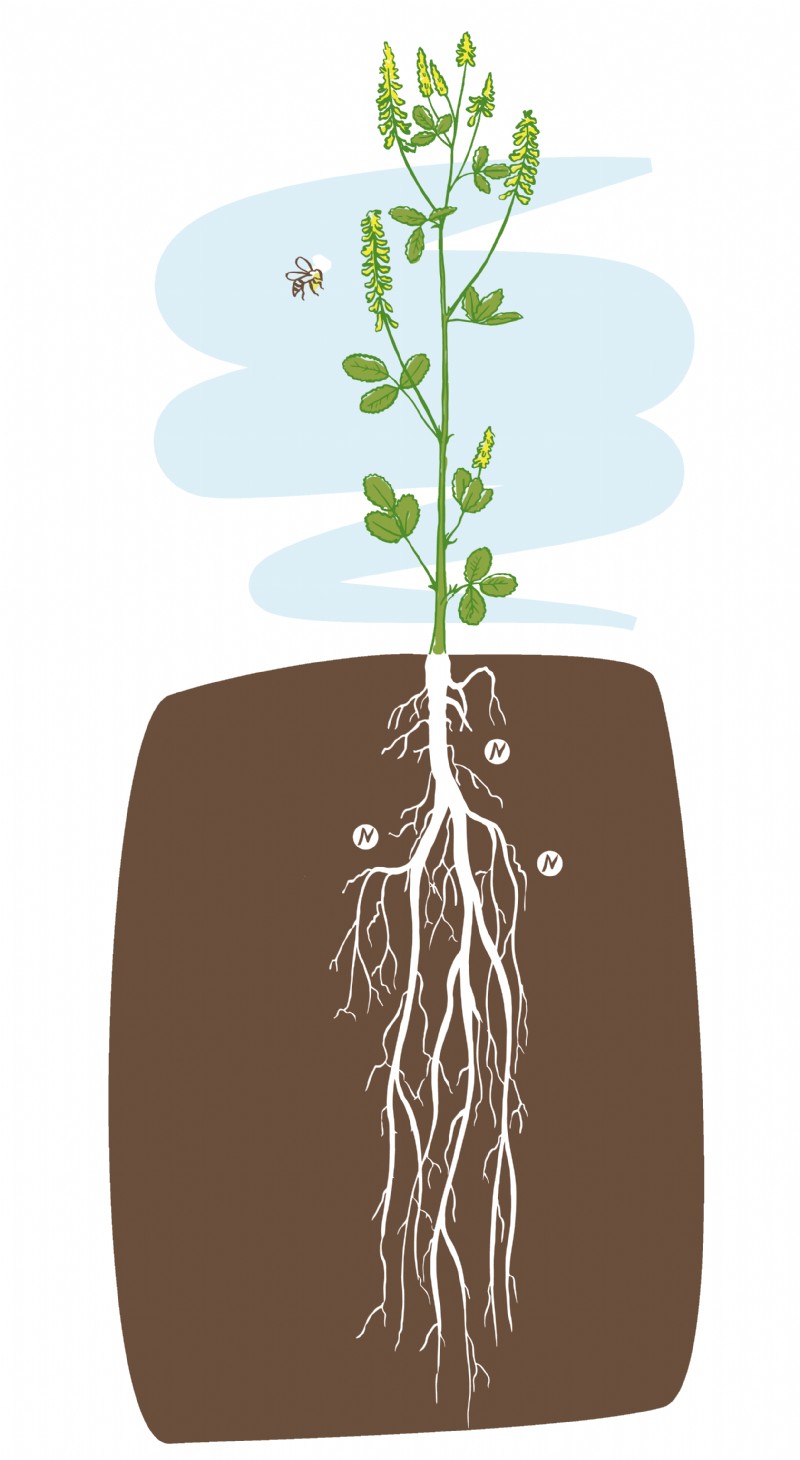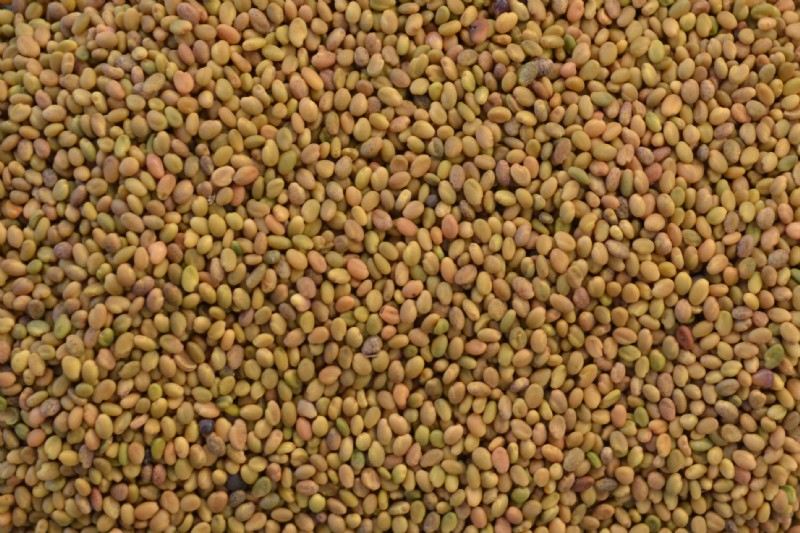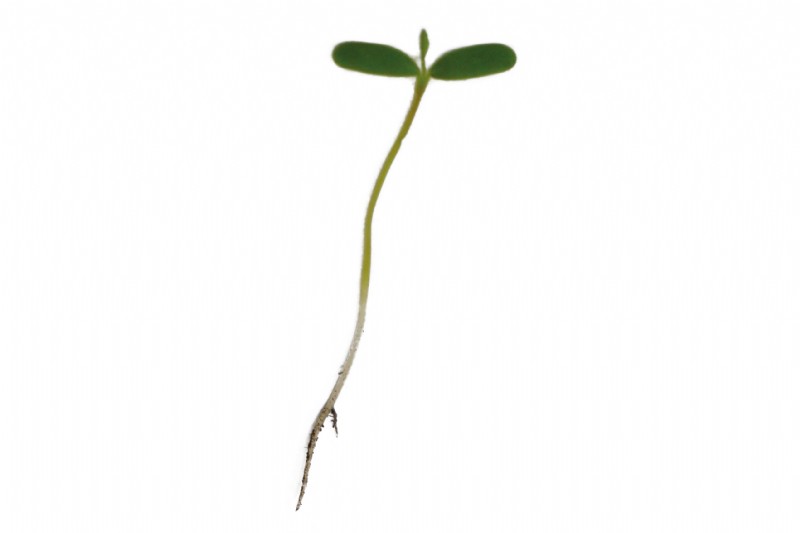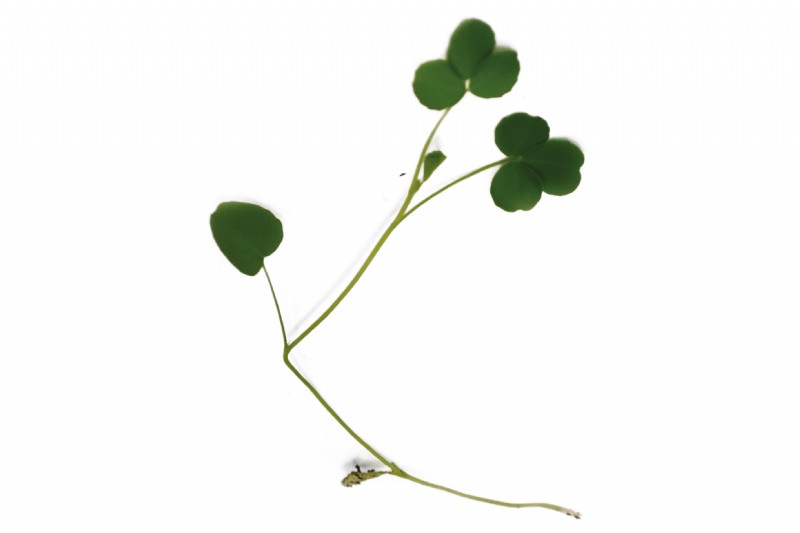Sweet Clover
Sweet clover (also known as yellow blossom) is a tall biennial plant. There are two forms, one white flowered and one yellow, with little difference between them. Once established it is aggressive, producing a large tap root and significant biomass.
Uses
In the UK it is generally used as a soil improving green manure species. It can also be a component of some diverse grazing mixtures and or a source specifically planted for pollinators and to a less extent game cover. In areas like the united states it is utilised for forage production.
Persistence
As this is a biennial it will die off after flowering. It can set seed and come back in subsequent crops, and although the plants are very conspicuous they tend to be in relatively small numbers so the impact on the next crop is limited. However, volunteers should not be allowed to contaminate subsequent cereal crops. Even a small amount can cause coumarin taint, which can lead to rejection of malting barley.
Strengths
As a legume sweet clover fixes nitrogen. It's also a strong rooting plant that's used for soil structure improvement and will provide large amounts of biomass if allowed to grow for its full two years.
Frost Tolerance
Sweet clover will survive over winter as a tap root and by the end of the winter leaves will be absent.
Yield
6 - 7t DM per ha of hay yields can be achieved.
Sowing Rate Advice
6kg per acre - 15kg per ha.
Seed of sweet clover is small and should be broadcast or drilled at a shallow depth (not more than a few mm). Sowing too deep will reduce the germination dramatically. The soil should be rolled after sowing to increase soil moisture contact with the seed.
Mixture Sowing Rate Advice
1kg per acre - 2.5kg per ha.
Sowing rate is as a component of a diverse grazing mixture.
Ideal Sowing Time
March - May is the ideal time for sowing in the spring. Mid to late August is the best time for an autumn sowing. Establishment is less likely to be reliable if sowing extends too far into September.
Management
Sweet clover does not take kindly to hard topping, so should be topped 10cm above the ground, to avoid damage to the plant crown. This may limit the options for weed control. The information on pest and disease tolerance for sweet clover is limited. Observations suggest that it is considerably more susceptible to sitona weevil and downy mildew than red or white clover.
Distinguishing characteristics
Seed
The seed is a rounded, oblong shape. The colour is generally beige to light green, with a smooth finish. It is around 2mm in length.
Seedling
The seedling produces a pair of blunt ended cotyledons, which are approximately half the width of their length. The petioles are short (if evident). The first true leaf is much more elliptical in shape, with softly toothed margins.
Flowering Plant
An upright species, potentially reaching 1.6 metres in height in the second year.
Its trifoliate leaves look similar to lucerne, with oblong leaflets, but a difference is the terminal leaflet is on a longer petiole, than the lateral leaflets. At the apex these leaflets maybe toothed. Also the stipule on sweet clover is small, narrow, triangular and very pointed, without a toothed margin.
The stems are a rich green colour when young, but become duller and woody in the second year.
The inflorence are long, with an arrangement of separate clustered flowers, attached by short stalks along a central stem (raceme) They may be yellow or white.
It has a several deep taproots and the aerial growth is produced from a crown.
Additional Info
Average seeds per kg - 480,000. Average protein content 15-16%.
Works well with
It can be grown with other legumes like red or white clover as part of a diverse mixture, or with chicory as a 2 to 3 years game cover mix.You can find Sweet Clover in the following mixtures
- Summer Green Manure - Early Sown N Fixer
- Summer Quick Fix Mix
- Summer Quick Fix 70% ORGANIC
- Herbal Over-Seeding Mixture (CSAM3/SAM3)
- Herbal Over-Seeding Mixture 70% Organic
- 'HERBAL' Grazing Ley - Four Year Drought Resistant Ley
- ‘HERBAL’ Grazing Four Year Ley 70% ORGANIC
- Herbal Heavy Land Ley - for Medium and Clay Soil
- Herbal Heavy Land Ley - for Medium and Clay Soil - 70% ORGANIC
- General Purpose Game Mix 70% ORGANIC
- Heavy Land Legume & Herb Rich Sward (GS4/SAM3/CSAM3)
- Operation Pollinator Mix (AHL1/CAHL1/AB1)
- Diverse Over-Seed Heavy Land or Cutting Mix (CSAM3/SAM3)








